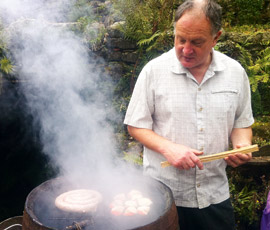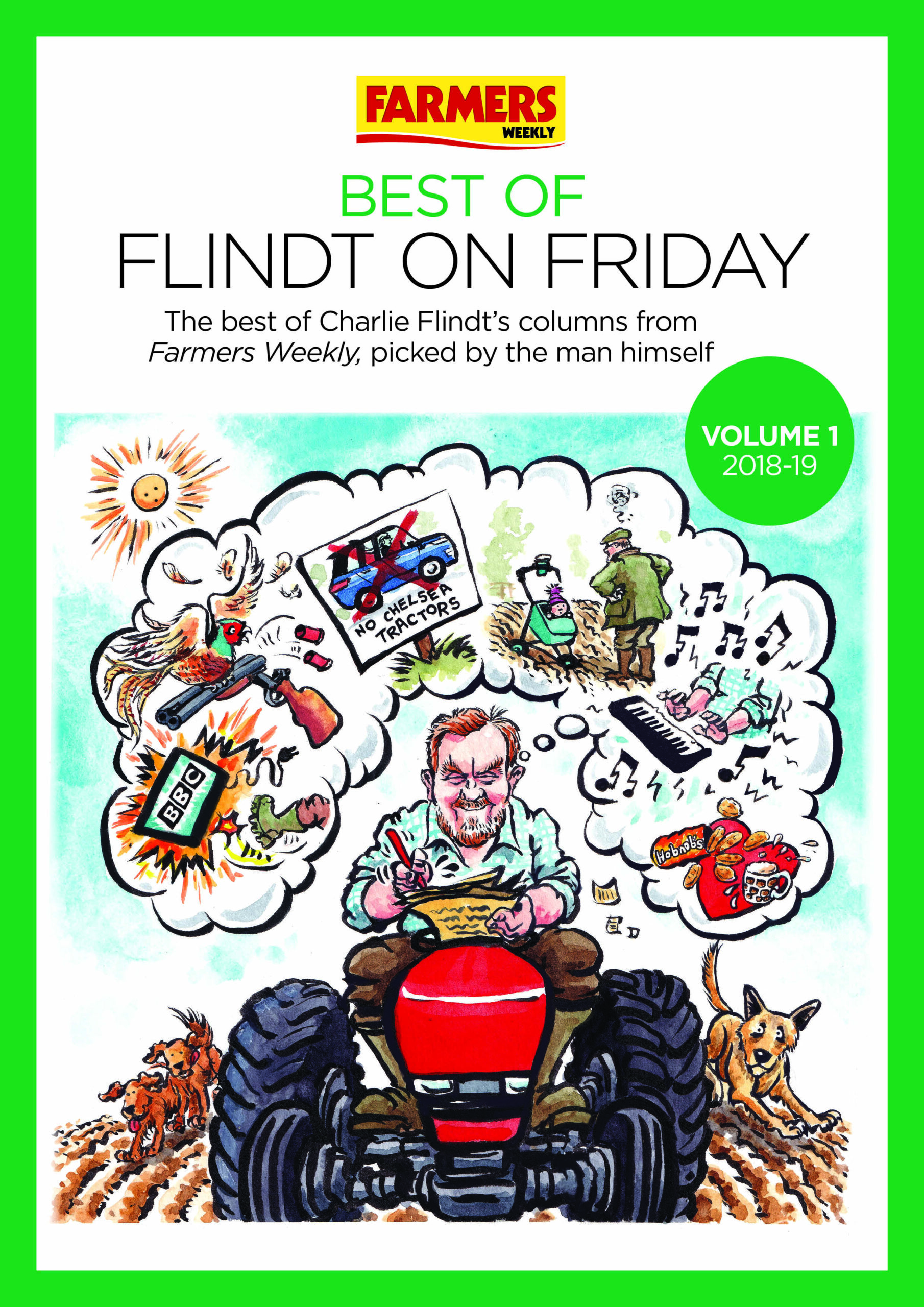Rediscovering food from kitchens past

Whatever happened to swan pies, badger ham and pickled goose? Rachel Jones meets the man on a mission to revive England’s culinary history.
If it wasn’t for the halogen light bulbs on the ceiling, you’d think you were stepping into a time warp when you walk into Ivan Day’s farmhouse kitchen.
There’s no Aga or wood burning stove. There’s no toaster, kettle or microwave. And there’s definitely no IKEA furniture or Habitat dinner plates. Instead, an open fireplace is framed with bellows, cleavers, pots, pans and ironmongery. Every shelf is filled with rare copper and tin dessert moulds in the shape of swans and lions, and any remaining surfaces are lined with mysterious implements in brass, ivory and wood.
Some of this equipment dates as far back as the 16th century, pre-dating Shakespeare, but this is no museum and you definitely won’t find a ‘look-don’t-touch’ policy here. Every item is regularly used for Ivan’s cookery courses – and they’re some of the most unusual cookery courses you can find in the UK.
Ivan is the man behind Historic Food – a food school devoted to recreating and reviving Britain’s culinary past. From his 17th century farmhouse, tucked away in the village of Shap in Cumbria, Ivan hosts small groups and teaches them how to prepare dishes that have long been lost from the typical British kitchen.
In one lesson you could be making flummery (a type of sweet soft pudding), pig brawn (a kind of pickled pork) or elaborately moulded fruit pastes. In another it could be parmesan cheese ice-cream, powdered goose or a herring pie.
CURING AND SMOKING
When I meet Ivan he’s teaching his ‘Hams and preserving’ course, which brings to life old English methods of curing and smoking meat and fish. One of the centrepieces is a gammon of sweetcured Herdwick mutton, prepared to a 18th century recipe.
“I’m crazy about mutton, I think everyone should use it more than they do,” says Ivan. “Rough Fell and Herdwicks are great sheep – they’re really old breeds and the quality of the mutton is fantastic.”
Ivan is the last person in Cumbria still producing cured mutton in this way, which highlights what he means when he talks about losing our culinary past.
“Techniques of curing and smoking are very related to agriculture and farming,” he says. “Every farmhouse would have done this, and if they didn’t get it right, people died.”
“I still feel the Brits don’t have enough pride in their traditions. People have culinary amnesia and forget what we used to do and what we used to be good at. English food tends to be a bit of a joke, but people used to really admire our food.”
If you need convincing, Ivan can quote an Italian book dating from the 1470’s which extols the virtues of English cheeses. Nowadays Italy is regarded as a ‘foodie’ nation, but 600 years ago it was importing British dairy products – possibly ewes milk cheeses on the back of the wool industry.
REVIVING TRADITION
One of the biggest problems in trying to revive these traditions, says Ivan, is that a lot of the food from the past simply isn’t doable without the right kit. The British public show a real spirit of experimentation when it comes to food – just look at the success of Heston Blumenthal’s madcap TV shows – but realistically, “they aren’t going to spend weeks curing a piece of beef and roasting it in front of an open fire.” This is where Ivan’s working museum comes into play.
21st century kitchen gadgetry and technology would undoubtedly make preparation quicker, easier, cleaner and possibly safer, but in the Historic Food kitchen, authenticity is king. For students, this means roasting meat using an original seventeenth century clockwork spitjack, making jellies and ice creams with genuine Victorian moulds or – like I did – curing mutton in an antique ham pan and then taking it outside and smoking it in a barrel in Ivan’s back garden.
“The National Trust has all this stuff but it doesn’t get used,” says Ivan, “it’s just dressing. I want to use this stuff for its real purpose and I’ve grown a small business out of it. Yes, I could buy a modern stainless steel smoker, but for me it’s much more interesting to see where it comes from.”
PERIOD FOOD
For Ivan, where it all comes from is an interest in antiquarian recipe books and manuscripts. At thirteen he learnt to cook from a 17th century cookery book and forty years later he’s built up a whole library devoted to period food.
One example he pulls from the shelf has a whole section entitled “Of hunting the badger”, and goes on to describe the method for preparing badger hams.
“Badger meat is very succulent apparently, because the fat is very thick around the hind legs – a thick waxy fat,” says Ivan. “I actually experimented on a badger that a friend accidentally hit with the car.”
Ivan has also eaten swan and cygnets, which came his way after they were caught up and died in fishing nets, although don’t expect to see swan pie featuring on Ivan’s courses any time soon – the birds belong to the Crown under an ancient charter and are also protected by the Wildlife and Countryside Act.
But one of my favourite books in the collection has to be a original manuscript that never got published, written by a Yorkshire farmer’s wife in the 1830s (see right?). The immaculately handwritten notebook is packed with instructions on preparing farmhouse staples like dressed venison, cured and salted tongue, fried calves liver and buttermilk cakes. What’s more, the whole group got to handle the book and browse its yellowing pages, and all without a white glove in sight. Short of going through a time warp, it’s about as close as you can get to touching the past.
Of course, despite all the history packed into the Historic Food farmhouse, there is the odd concession to modern methods. Even if you follow a medieval recipe to the letter it’s impossible to source the same medieval pig breeds, for example, that your ancestors would have used.
“Anything older than 19th century hasn’t survived,” explains Ivan. “Cumberland pigs have been extinct since the 1920s, although the genomes are still hovering around in other pigs.”
Another concession is a meat thermometer, to check that large cuts are properly cooked all the way through. And he might deal in history, day in day out, but no-one could accuse Ivan himself of being a relic from the past – he buys all his niche ingredients and sources collectible cookery books online, on his very 21st century MacBook Air laptop.[ENDNOTE] Find Ivan’s course timetable for 2012 along with more period recipes on his website: www.historicfood.com
DID YOU KNOW
– Battenburg cake used to have nine squares, not four. It was later simplified to make it easier for mass production.
– ‘Kipper’ is actually an old term for a salmon that had exhausted itself during spawning – in Ivan’s words: ” a worn out salmon.”
– The famous white-on-blue Wedgwood porcelain design actually derives from cake making. Chefs would create elaborate sugar decorations using sugar moulds and lay them onto iced cakes to produce the now-famous Wedgwood effect.
– Goose hasn’t always been an expensive bird served up as a Christmas treat – it used to be eaten by commoners at Michaelmas (29 September).
– You can build a home smokery out of almost anything. Ivan’s father once made one from a 19th century antique wardrobe – “it was the poshest smokery you’ve ever seen!”
LADY WESTMORLAND’S SWEETMEAT PUDDING
This dish – a sort of early incarnation of bread and butter pudding – was served up at lunch during Ivan’s preserving course and got a unanimous thumbs up from the group. Why not see if you can decipher the 17th century instructions and recreate it in your own kitchen? Clue: A ‘manchet’ is a loaf of bread.
“Take 12 yolks of eggs beat them very well, then put to them somewhat more than a pint of thick cream, and sweeten it with sugar, wherein if you please you may grind a little musk, and ambergris. Then take a manchet, pare off the crust and cut it round the loaf in very thin slices, and dip them in the batter, then lay them in a dish to cover all the bottom, and sides of it. Then lay in some preserved apricots whole, and cherries, plums, citron, or orange peel; then cover the sweetmeats with slices of bread, then pour on a little of your batter with a spoon, then lay another row of sweetmeats, and so continue until your dish be full, and you have put in all your batter; then set it into the oven and bake it.” From a 1690s hand written recipe book.

